TL;DR: There may come a time when you need to build a ZFS pool in a temporarily degraded state. Reddit user u/mercenary_sysadmin describes how this is done, and this post provides additional commentary.
The approach uses a temporary file in place of the disk, then taking it offline resulting in a degraded pool. When the physical disk is available, the file can be replaced with the actual disk in the pool.
My desktop sits idle most of the time as I’ve switched to using my laptop for day-to-day tasks, which seemed like a waste of hardware. Meanwhile, my NAS, running off an 8TB WD Elements drive connected via USB to a ThinkCentre M93p, could use an upgrade. The plan was to set up my desktop as the new NAS with four 8TB WD drives in RAID-Z1. I already have the drives, plus one spare, lying around, so I thought it would be an easy installation, but two of the drives were dead. This left me with three good drives plus the WD Elements, which I then had to shuck. A backup of all critical data was already in place but the restore would have taken too much time, so I made the decision to set up a degraded ZFS pool with the three drives, copy the data over from the WD Elements, shuck it, and then introduce it to the pool.
Read more...
Status
Last month, my homelab experienced an incident that resulted in service disruption for 3 hours and 8 minutes, and because I like to cosplay as a sysadmin in my free time this is a post-incident analysis. The effects of the disruption were mostly external, mainly affecting the main site and ytrss, internal systems remained unaffected.
A virtual machine hosted on Linode needed to be moved between physical hosts for urgent and unplanned maintenance. A similar situation has happened in the past both as planned and unplanned events, so I had opportunities to prepare, but this still resulted in a failure to automatically recover this time. Several improvements were made to my infrastructure and deployment strategy, which resulted in this disruption being shorter than most but still longer than expected.
Read more...
Earlier this month Google announced a software update to the Pixel 4a, under the Pixel 4a Battery Performance Program. This comes after going without any software update since 2023. For users of the Pixel 4a, this update claimed to “improve the stability of their battery’s performance”. However, for some devices, this update would have negative effects which “reduced available battery capacity and impacts charging performance”. For devices that are negatively impacted, Google would offer a battery replacement or monetary compensation where a replacement is not possible. The press coverage on the announcement was met with skepticism and so was the general opinion on social media and forums. I, on the other hand, was hopeful. After all, the announcement says the update will mean the battery performance would be the same as before, and if not, your phone is an “Impacted Device” which Google is already aware of and would offer a replacement for.
Read more...
Over the last two years, I have been blogging consistently here; this was something I last achieved in the early 2010s. Around 2011, I had a blog where I posted commentary on consumer technology news and the occasional tutorial/guide, which was used on and off until 2014 and is now lost to the internet. In 2016, I pieced together a portfolio website to have somewhere to link to when applying for jobs. I wanted to include a blog on the site, but I couldn’t muster up the creativity to write anything. Nothing I wanted to say was novel or worth sharing, so that part of the site was left empty for a while.
Read more...
Does IKEA have no shelf space for slower-moving items in the self-service furniture area? My wife and I hadn’t seen this before, but a few items just say “Place your order for this product at the search and order kiosk or ask a co-worker”1 instead of the usual row and shelf numbers.
Product tag with article number asking to place the order at a search and order kiosk or to ask a co-worker
Read more...
In my last post, I praised the NS International app, while it’s user-friendly and frankly better than some of the other apps or websites I’ve used there is still room for improvement. I’ll use a recent trip to Leuven from the Netherlands as an example.
The roughly 3-hour trip was booked over a month in advance and I was able to get a cheaper price through the Early Bird discount. Unlike the usual Flex fare ticket, you must take the same Intercity Brussels train as stated on your travel itinerary unless any previous train you were on is delayed.1 I was meant to take the train to Schiphol Airport where I would catch the Intercity Brussels train to Mechelen and transfer to Leuven.
Read more...
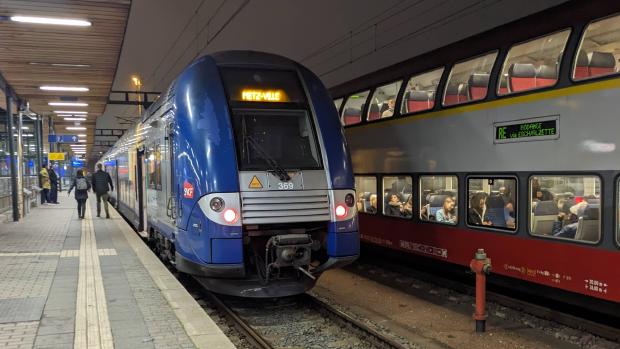
Train for Metz-Ville at Luxembourg station.
This month I had to travel to Metz and decided to book the trip by train from Utrecht. The other option was to fly from the Netherlands to Luxembourg and take the train across the border to Metz, France. I’m happy to say the 7-hour journey by train went great. There were a few minutes of delay in places but the transfer times between trains were enough of a buffer.
Read more...
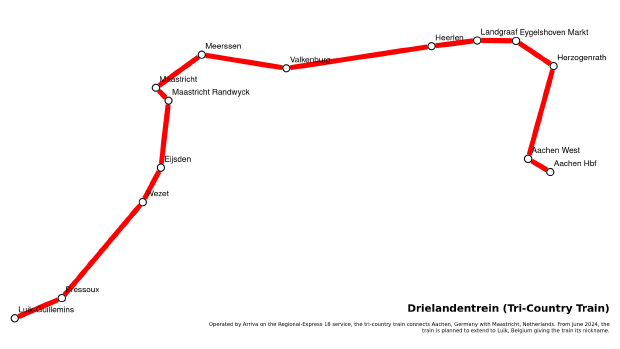
Since I’ve begun blogging semi-regularly I’ve learned that having visuals helps especially when it comes to talking about different locations and their relation to each other. It can be difficult to judge the space and distance between two streets in a city or two cities in a country without some familiarity with the location. A problem I come across frequently when reading transit-related articles and blogs. It’s for this reason I try to include maps in my transport-related posts from very early on.
Read more...
As a long-time user of RSS (Really Simple Syndication) to consume media, I thought I’d write a short post about it. The first specification was released on 15 March 1999, so it did celebrate its 25th birthday yesterday after all. Subscribing to RSS feeds allows you to receive updates on new posts to a website, it’s used by news aggregators to get you articles from different sources, and most famously used to deliver the latest podcast episodes to your app of choice. 1
Read more...
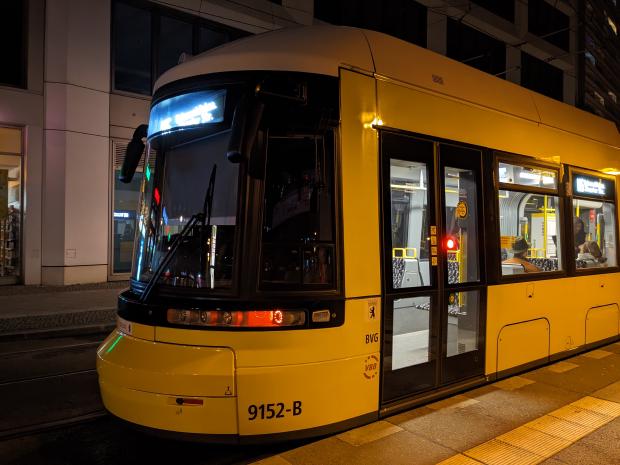
This Christmas my wife and I booked a semi-spontaneous trip to Berlin, Germany for a few days. Our trip included visiting the typical Christmas markets, restaurants, East Side Gallery, and Museum Island. Most of our traveling around the city was done through the public tram network, with the occasional use of the U or S-Bahn. A line from Vladimir Nabokov’s 1925 short story, A Guide to Berlin, comes to mind.
Read more...
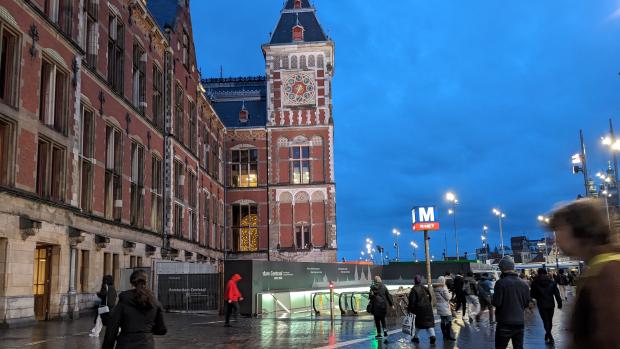
Amsterdam is a busy city with residents, businesses and visitors often talked about for its good urban planning, offering a walkable city that is still accessible by car, train, metro, tram, and bus. To those who have lived in or traveled around Amsterdam you will have come across the metro and their blue cubes with an “M” and red R-NET band at the bottom. If you’ve taken the time to travel on the Amsterdam Metro, does it seem like a typical metro?
Read more...
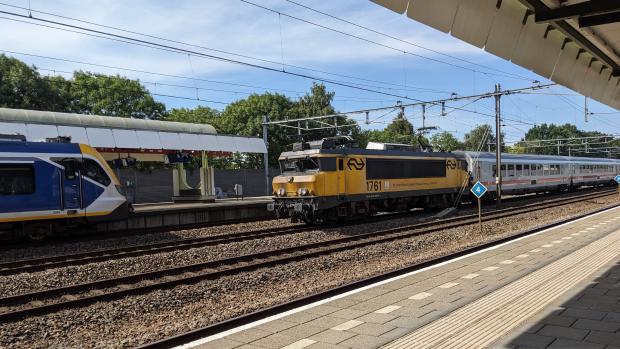
Between 1990 and 1994 eighty-one Class 1700 locomotives were built by Alstom. These were an iteration of the Class 1600 that came before, based on the French BB 7200. Over the years they were used in a push-pull configuration for DD-AR coaches, ICRm coaches, and others. By the 2010s most of the locomotives were no longer used and in 2019 the 1700 locomotives were only used to pull the IC Berlin train from Amsterdam to Bad Bentheim by NS. Designed to only support 1500V DC, the locomotive is then swapped for a German one which then pulls the passenger carriages to Berlin.
Read more...
It was a rainy Saturday afternoon when I was at a cafe with my wife scrolling through Hacker News when I came across Arne’s blog on why you should write your own static site generator (SSG). I had recently gone down that road myself, at least partially, so seeing someone’s views on the same topic intrigued me. I’ve been meaning to gather my thoughts around the subject, and what better time than now as somewhat of a response to Arne’s blog?
Read more...
Markdown is a neat and simple way to format text using a basic editor. You’ll have come across it on various different forums, instant messaging apps, and blogging platforms among other places where text fields are used. It was created by John Gruber in 2004 and had then been adopted across different platforms but lacked a standardised implementation. To address these inconsistencies, Jeff Atwood, John MacFarlane, and others have formed a group in an effort to standardise. Since 2014, text/markdown is now a recognized MIME type, and CommonMark was released which is the specification and test suite we need!
Read more...
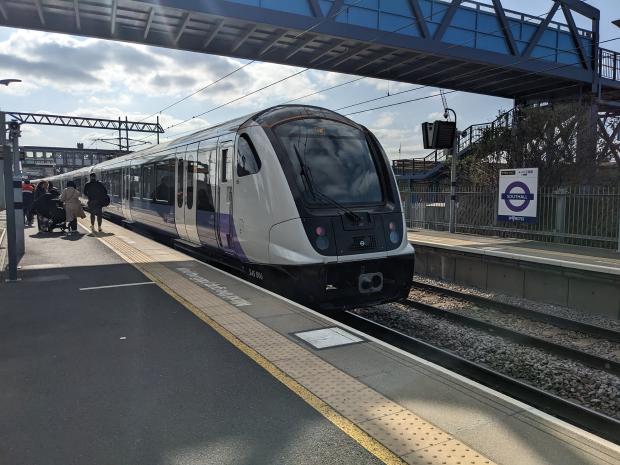
The contents of this post were originally toots on Mastodon, you can find the original thread there.
@PeskyPotato 24 June 2023 19:34 Recently, I had the opportunity to ride the Elizabeth Line, a commuter rail and rapid transport system, much like the Paris RER, connecting greater London to its core. After starting construction in 2009 it was officially inaugurated on 17 May 2022, the line goes from Reading and Heathrow in the west to Shenfield and Abbey Wood in the east. As part of the construction, 10 new stations were built along with refurbishing some of the existing stations along the route making them more accessible.
Read more...
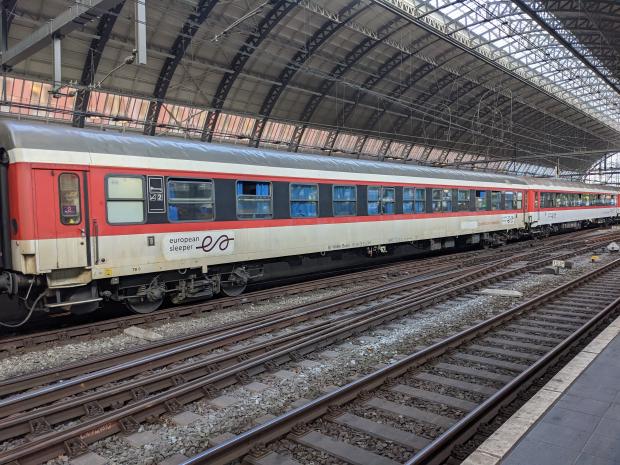
European Sleeper is a Dutch startup created in 2021 with plans to run European night trains. Formed by Elmer van Buuren and Chris Engelsman, the train operator ran their first passenger service on 25th May 2023, from Berlin to Brussels, through Amsterdam, Rotterdam and Antwerp. From 2024, European Sleeper also plans on expanding past Berlin to Dresden and Prague.
Since earlier 2022, I’ve been closely following the progress made by European Sleeper, anticipating their first ride. Although not a passenger myself yet, I was thrilled that this new train connection allows holidaymakers more sustainable, time efficient and dare I say entertaining travel opportunities. The Man in Seat 61 highlights some interesting travel connections that could be made using through the European Sleeper.
Read more...
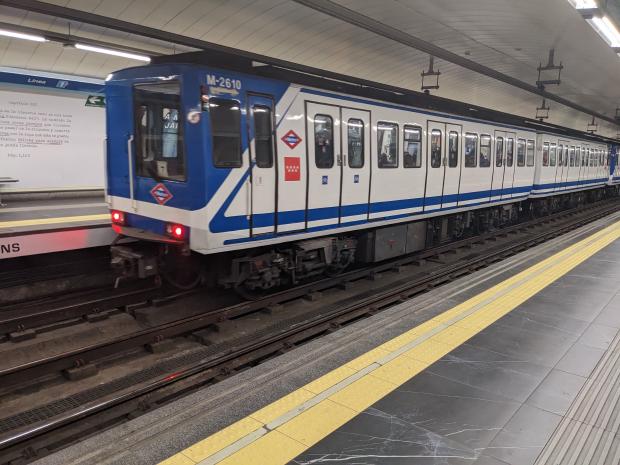
The contents of this post were originally toots on Mastodon, you can find the original thread there.
@PeskyPotato 14 May 2023 11:56 This weekend we have the series 7000 and 9000 manufactured by AnsaldoBreda for the #Madrid #Metro 🇪🇸, in 2002 and 2006 respectively. They're designed for the wide guage lines and come in single and dual-voltage variants as the metro system use both 600V DC and 1500V DC through rigid overhead catenary.
Read more...
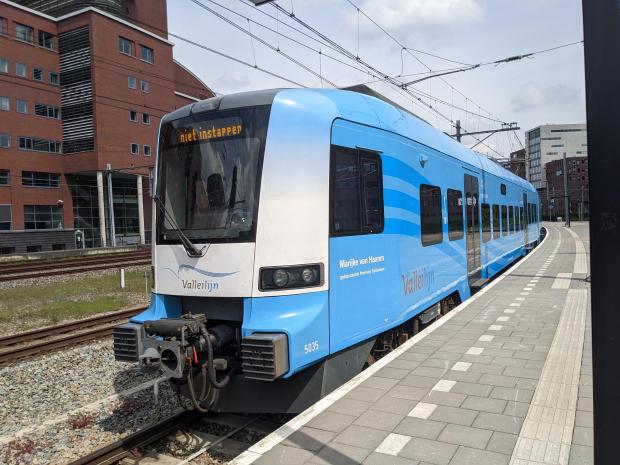
The contents of this post were originally toots on Mastodon, you can find the original thread there.
@PeskyPotato 6 May 2023 15:37 Not all Dutch trains are yellow! This is the Protos, an EMU built by Fahrzeugtechnik Dessau (FTD). Only 5 of these trains were ever put in service and they all run on the Valleilijn 🐓between Amersfoort and Ede-Wageningen operated by Connexxion since 2007.
#train
Read more...
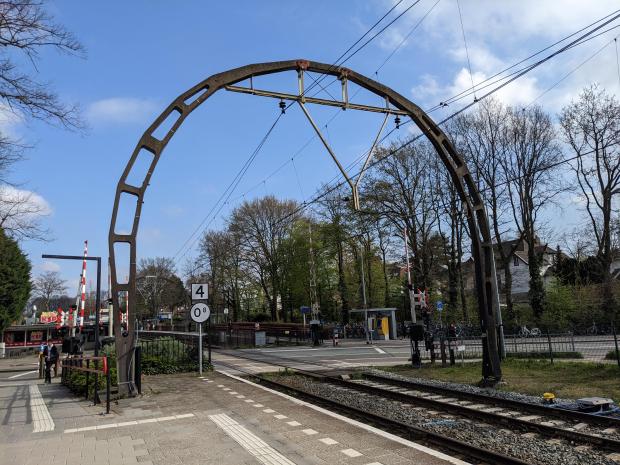
The contents of this post were originally toots on Mastodon, you can find the original thread there.
@PeskyPotato 30 April 2023 17:10 It's the weekend again, and it's time to spew information on my current rail obsession. The Netherlands started electrifying railway lines in the 1900s, and during WW2 concrete catenary masts were favoured because of the scarcity of steel. The Utrecht-Hilversum line was electrified in 1942 and received these unique horseshoe-like shaped portals nicknamed de Gotische Bogen (the Gothic Arches).
Read more...
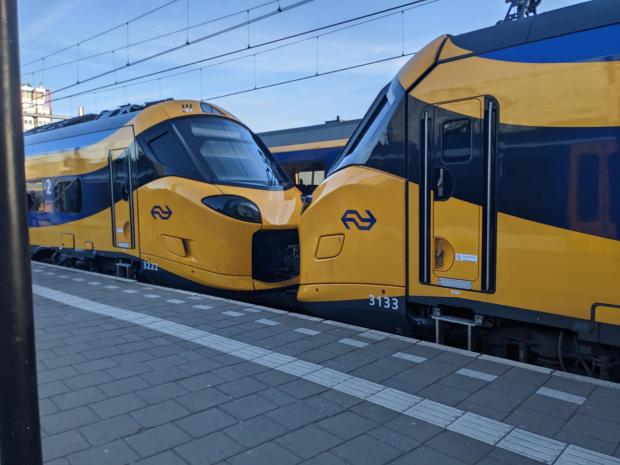
The contents of this post were originally toots on Mastodon, you can find the original thread there.
@PeskyPotato 19 April 2023 06:38 And we're off!
Behold the wasp, it's shiny and smells like brand new sneakers.
#train #ICNG
Replies: 1 Boosts: 0 Favourites: 2 | Source @PeskyPotato 19 April 2023 07:53 @phrawzty Indeed!
Read more...
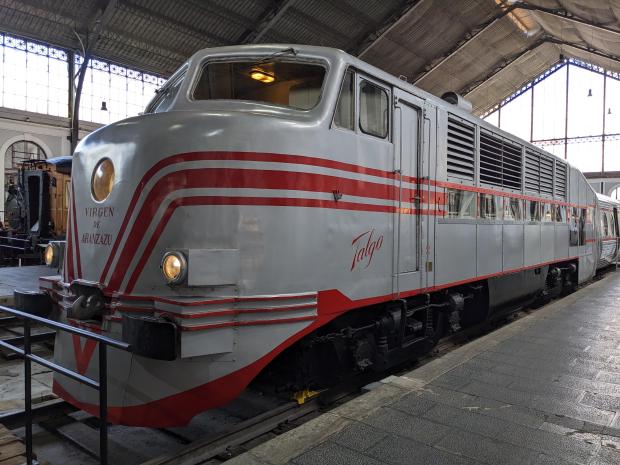
The contents of this post were originally toots on Mastodon, you can find the original thread there.
@PeskyPotato 15 April 2023 15:18 Talgo, innovative Spanish train manufactuer, started experimenting in the 1930s with self-guiding wheels, articulated trainsets and aluminium train bodies with a low center of gravity to come up with the Talgo II.
Replies: 1 Boosts: 0 Favourites: 1 | Source @PeskyPotato 15 April 2023 15:20 Talgo II was manufactured by American Car Foundry under Talgo's watch entering service in 1950 between Madrid, Spain and Hendaye, France, traveling up to 120 km/h.
Read more...
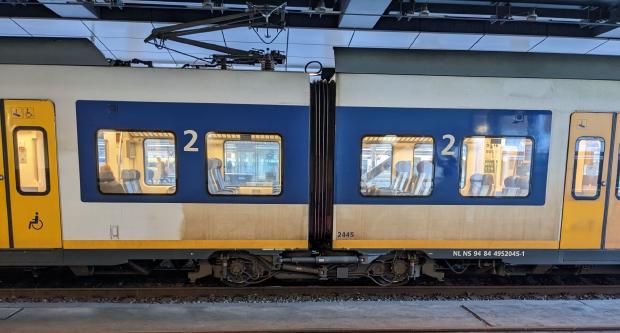
The contents of this post were originally toots on Mastodon, you can find the original thread there.
@PeskyPotato 1 April 2023 09:31 We're spotting Jacobs bogies! A Jacobs bogie is shared across two carriages as opposed to two bogies per carriage.
Pictured is the Thalys PBKA at Paris Nord, NS SLT, and NS SNG at Utrecht Centraal.
#train
Replies: 0 Boosts: 0 Favourites: 1 | Source
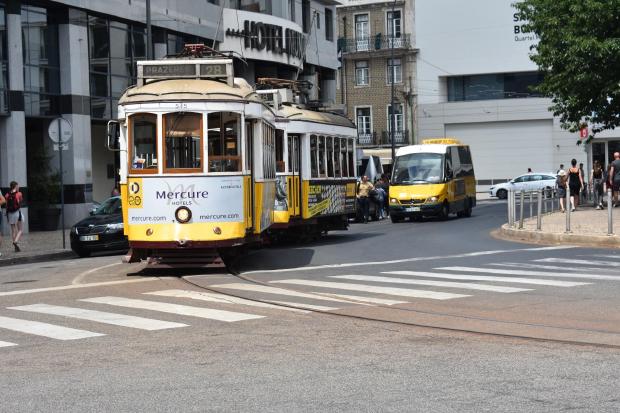
The contents of this post were originally toots on Mastodon, you can find the original thread there.
@PeskyPotato 5 March 2023 11:39 Here's Lisbon's very popular #Tram 28E at Praça Martim Moniz. Carris operates 6 tram routes, 5 of which are served by these classic refurbished trams, and one by articulated trams built by Siemens/CAF and Siemens/Sorefame.
Replies: 1 Boosts: 0 Favourites: 0 | Source @PeskyPotato 5 March 2023 11:42 p.s. locals frequently use the trams the move around the city, with a lot of tourists lines can get long. So if you are a tourist consider using the red tram which also goes along route 28.
Read more...
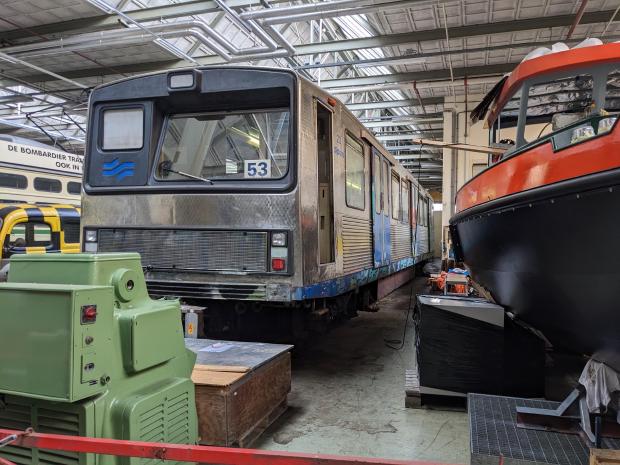
The contents of this post were originally toots on Mastodon, you can find the original thread there.
@PeskyPotato 25 February 2023 14:13 This is an M2 metro set built by Linke-Hofmann-Busch (LHB). All fairly alike, the M1/M2/M3 sets were used when the Amsterdam metro first opened on 14 October 1977. They were nicknamed "Zilvermeeuw" (translates to Herring Gull) for their shiny stainless steel exterior.
This set was the last to be taken out of service on 19 December 2015 as the newer M5/M6 series from CAF were introduced between 2012 and 2015.
Read more...
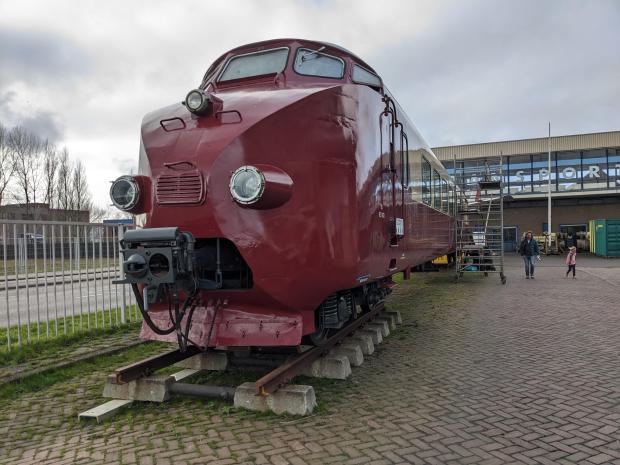
The contents of this post were originally toots on Mastodon, you can find the original thread there.
@PeskyPotato 19 February 2023 20:20 This is the diesel-electric NS DE4 (and SBB RAm TEE) developed by SBB and NS for the Trans Europ Express and put in service in 1957. Five of these 4-part trains were built, each consisting of a power car, passenger car, dining car and control car.
#train
Replies: 1 Boosts: 0 Favourites: 1 | Source @PeskyPotato 19 February 2023 20:21 The trainsets were discontinued in 1973 and sold to Ontario Northland Railway in 1977. After trouble adjusting to the Canadian weather they were removed in 1992. They found themselves back in Europe by 1998 and eventually in the possession of the TEE Netherlands Foundation.
Read more...
The contents of this post were originally toots on Mastodon, you can find the original thread there.
@PeskyPotato 17 February 2023 21:55 Last month Strukton showcased their battery powered locomotives at a press event with the State Secretary for Infrastructure and Water Management. This isn't just a battery powered locomotive but can also be charged through overhead lines.
https://struktonrail.com/our-stories/news/2023/01/state-secretary-gives-green-light-for-rail-terminal-lage-weide-and-battery-locomotive/
Replies: 1 Boosts: 0 Favourites: 0 | Source @PeskyPotato 17 February 2023 21:56 Strukton Rail previously purchased one NS Class 1600 locomotive and three NS Class 1700 locomotives, all built by Alstom. These were previously used to transport passengers with NS DD-AR double-decker carriages.
Read more...
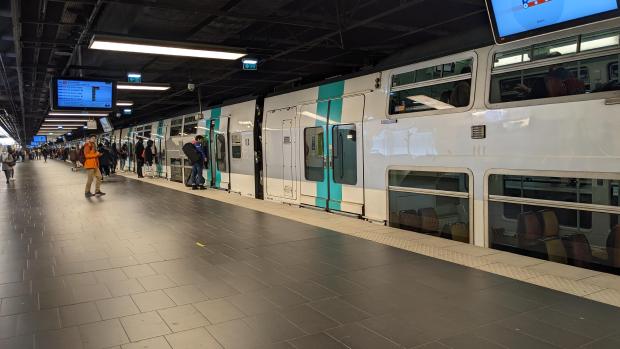
The contents of this post were originally toots on Mastodon, you can find the original thread there.
@PeskyPotato 12 February 2023 06:52 It's the weekend and time for #trains!
Here's the MI 2N "Altéo" a dual-voltage EMU from Alstom and Bombardier that serves the busiest rail line, RER A, in France and possibly Europe.
Replies: 1 Boosts: 0 Favourites: 1 | Source @PeskyPotato 12 February 2023 06:53 I'm impressed with the efficiency at which the Paris metro runs. Before the MI 2N, single-decker MS 61 trainsets were used. The SACEM, a speed train protection system, was rolled out in the 1980s to allow shorter gaps between trains allowing for higher frequency on those trains.
Read more...
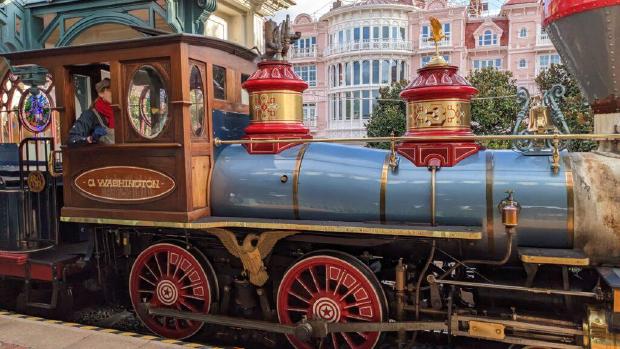
I recently visited Disneyland Paris and I spent more time researching and experiencing the Paris metro system and the RER than looking up and preparing for Disneyland itself. Upon visiting the park in Disneyland Paris I was pleasantly surprised to be greeted by a railway line right by the park entrance. There was no crowd, no line whatsoever, just an elegantly designed station. Going up the stairs I saw the steam locomotive coupled to passenger cars about to depart. I just stumbled across a train!
Read more...